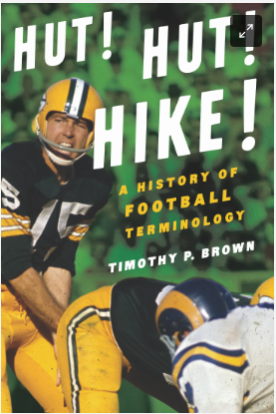HOCKEY HOF | ‣
Aurele Joliat Hockey legend
Born August 29, in Ottawa, Ontario, was Hockey Hall of Fame Left Wing, Aurele Joliat. He was known by many as the Little Giant Joliat, and by others as the Mighty Atom, and whatever people said they all agrees he was a magnificent skater in hockey. Joliat helped the Montreal Canadiens to the Stanley Cup in 1924 over the WCHL's Calgary Tigers. He helped the Canadiens win two more cups in 1930 and 1931. His best season was in 1925, when teamed with Howie Morenz and Billy Boucher. Joliat scored 29 goals to lead the NHL, and his 41 points would be a career high. All in he played 16 seasons in the National Hockey League. The Mighty Atom finished his career with 270 goals and 460 points in 655 games. At the time of his retirement, Joliat was the NHL career leader in games played, a mark he held until surpassed by Hooley Smith in 1940.
HOCKEY HOF | ‣
Al Arbour Hockey Defensive Legend
Born November 1, 1932, in Sudbury, Ontario, was a Hockey Hall of Fame Defenseman and Coach Al Arbour. This legend is a three-time Stanley Cup winner, and two of them were consecutive with different teams. During his 14-year NHL Career, he skated for the Detroit Red Wings, Chicago Black Hawks, Toronto Maple Leafs, and the St Louis Blues. At the time of this post, Al is third on the list for the amount of NHL games coached. Arbour is also the last known NHL player to wear eyeglasses on the ice while playing.
HOCKEY HOF | ‣
Mike Vernon Hockey Hall of Fame
Mike Vernon carved a successful career in the National Hockey League (NHL) spanning 19 seasons (1984-2002). Here's a summary of his key achievements:
Goaltending Greatness:
-Played for four teams: Calgary Flames, Detroit Red Wings, San Jose Sharks, and Florida Panthers.
-Amassed an impressive record of 385 wins, 274 losses, and 92 ties throughout his career.
-Boasted a career save percentage of .889 and a goals-against average of 3.00, solidifying his position as a reliable and consistent goaltender.
Championship Glory:
-Two-time Stanley Cup Champion: Helped the Calgary Flames win the Stanley Cup in 1989 and the Detroit Red Wings in 1997.
-Earned the coveted Conn Smythe Trophy as playoff MVP with the Red Wings in 1997, a testament to his outstanding performance on their championship run.
Franchise Records:
-Holds several Calgary Flames franchise records including most games played, most wins, and most minutes played by a goaltender (both regular season and playoffs). These records showcase his remarkable career with the Flames.
Accolades and Legacy:
-Retired jersey number 30 by the Calgary Flames, an honor reserved for the team's most iconic players.
-Inducted into the Alberta Sports Hall of Fame in 2010 and the Hockey Hall of Fame in 2018, further solidifying his legacy as a hockey legend.
Mike Vernon's career is remembered for his longevity, consistent excellence, and contributions to championship teams. He remains a respected figure in the hockey world and his achievements stand as a testament to his dedication and skill.
Goaltending Greatness:
-Played for four teams: Calgary Flames, Detroit Red Wings, San Jose Sharks, and Florida Panthers.
-Amassed an impressive record of 385 wins, 274 losses, and 92 ties throughout his career.
-Boasted a career save percentage of .889 and a goals-against average of 3.00, solidifying his position as a reliable and consistent goaltender.
Championship Glory:
-Two-time Stanley Cup Champion: Helped the Calgary Flames win the Stanley Cup in 1989 and the Detroit Red Wings in 1997.
-Earned the coveted Conn Smythe Trophy as playoff MVP with the Red Wings in 1997, a testament to his outstanding performance on their championship run.
Franchise Records:
-Holds several Calgary Flames franchise records including most games played, most wins, and most minutes played by a goaltender (both regular season and playoffs). These records showcase his remarkable career with the Flames.
Accolades and Legacy:
-Retired jersey number 30 by the Calgary Flames, an honor reserved for the team's most iconic players.
-Inducted into the Alberta Sports Hall of Fame in 2010 and the Hockey Hall of Fame in 2018, further solidifying his legacy as a hockey legend.
Mike Vernon's career is remembered for his longevity, consistent excellence, and contributions to championship teams. He remains a respected figure in the hockey world and his achievements stand as a testament to his dedication and skill.
HOCKEY HOF | ‣
Charlie Gardiner The King of Right Hooks and Stanley Cups
Charles Robert Gardiner (1904-1934) wasn't just a hockey player; he was a revolutionary, a magician on skates, and an icon who forever changed the way the game was played. He was Charlie Gardiner, the first right-handed goalie to win the Vezina Trophy and arguably the best to ever step on the ice.
Born in Edinburgh, Scotland, Gardiner settled in Canada with his family as a child. While drawn to baseball, his natural agility steered him towards the frozen pond, where he developed an unorthodox, acrobatic style. Unlike the traditional left-handed goalies, Gardiner thrived with his right paddle, baffling opponents with his unorthodox saves and quick reflexes.
He started his professional career in the minor leagues, quickly drawing attention for his unique style and remarkable talent. In 1927, he joined the Chicago Blackhawks, ushering in a golden age for the franchise. His agility and athleticism were a revelation, transforming the goaltender position from a passive role to an active part of the offense.
His career was an ode to excellence. He won the Vezina Trophy twice, in 1932 and 1934, becoming the first right-handed goalie to achieve the feat. He was a First Team All-Star on three occasions, his saves etching themselves in Blackhawks lore. But Gardiner's legacy wasn't just about stats; it was about heart. He captained the Blackhawks to their first Stanley Cup in 1934, showcasing his leadership and unwavering will to win.
Points of Emphasis on Gardiner's Hockey career:
-Gardiner's nickname, "King of Right Hooks," which reflected his signature save where he would redirect the puck with his right glove.
-His fierce competitiveness and dedication to the game, often playing through injuries.
-His lasting impact on the Chicago Blackhawks organization, with his jersey number retired in his honor.
-He was inducted into the Hockey Hall of Fame in 1945 as one of the inaugural members.
Tragically, Gardiner's life was cut short at the age of 29 due to complications from a tonsillectomy. Despite his short career, his impact on hockey was immense. He revolutionized the goaltending position, paving the way for countless right-handed netminders. His passion, charisma, and acrobatic saves solidified his place among the game's all-time greats.
Charlie Gardiner wasn't just a goalie; he was a showman, a pioneer, and a legend. His unorthodox style, his dazzling saves, and his unyielding spirit etched his name onto the Stanley Cup and into the hearts of hockey fans forever.
Born in Edinburgh, Scotland, Gardiner settled in Canada with his family as a child. While drawn to baseball, his natural agility steered him towards the frozen pond, where he developed an unorthodox, acrobatic style. Unlike the traditional left-handed goalies, Gardiner thrived with his right paddle, baffling opponents with his unorthodox saves and quick reflexes.
He started his professional career in the minor leagues, quickly drawing attention for his unique style and remarkable talent. In 1927, he joined the Chicago Blackhawks, ushering in a golden age for the franchise. His agility and athleticism were a revelation, transforming the goaltender position from a passive role to an active part of the offense.
His career was an ode to excellence. He won the Vezina Trophy twice, in 1932 and 1934, becoming the first right-handed goalie to achieve the feat. He was a First Team All-Star on three occasions, his saves etching themselves in Blackhawks lore. But Gardiner's legacy wasn't just about stats; it was about heart. He captained the Blackhawks to their first Stanley Cup in 1934, showcasing his leadership and unwavering will to win.
Points of Emphasis on Gardiner's Hockey career:
-Gardiner's nickname, "King of Right Hooks," which reflected his signature save where he would redirect the puck with his right glove.
-His fierce competitiveness and dedication to the game, often playing through injuries.
-His lasting impact on the Chicago Blackhawks organization, with his jersey number retired in his honor.
-He was inducted into the Hockey Hall of Fame in 1945 as one of the inaugural members.
Tragically, Gardiner's life was cut short at the age of 29 due to complications from a tonsillectomy. Despite his short career, his impact on hockey was immense. He revolutionized the goaltending position, paving the way for countless right-handed netminders. His passion, charisma, and acrobatic saves solidified his place among the game's all-time greats.
Charlie Gardiner wasn't just a goalie; he was a showman, a pioneer, and a legend. His unorthodox style, his dazzling saves, and his unyielding spirit etched his name onto the Stanley Cup and into the hearts of hockey fans forever.
HOCKEY HOF | ‣
Sylvio Mantha Hockey Hall of Fame Defenseman
Sylvio Mantha carved a successful path in the National Hockey League (NHL), establishing himself as a key player for the Montreal Canadiens throughout his 14-season career.
-Early Hockey Journey
From Winger to Defenseman: Mantha's hockey roots began on the right wing, but his development led him to excel as a defenseman. This shift allowed him to showcase his well-rounded skillset, combining offensive instincts with strong defensive awareness.
-Three-Time Stanley Cup Champion:
Mantha's dedication played a crucial role in the Canadiens' success. He was part of three Stanley Cup victories in 1924, 1930, and 1931, solidifying his place in the team's championship legacy.
-A Two-Way Threat
Mantha wasn't just a defensive stalwart; he possessed a surprising offensive ability. He was known for contributing on the scoresheet, with a career-high of 13 goals in a single season. Notably, he scored the first goal at the newly-built Boston Garden in 1928.
-Longevity and Leadership:
Mantha's 14-year career with the Canadiens speaks volumes about his consistency and value to the team. He likely served as a leader in the locker room, mentoring younger players and fostering a winning culture.
-Beyond the Statistics
Evolution of the Game: Mantha's career spanned a period of significant change in hockey. He witnessed and likely adapted to the evolving strategies and playing styles of the era.
-A Foundation for Future Success:
Players like Mantha, with their dedication and two-way skillset, paved the way for future generations of defensemen who embraced a more offensive approach to the game.
In conclusion, Sylvio Mantha's career embodies the qualities of a valuable hockey player. His contributions to the Montreal Canadiens, both on and off the ice, solidify his place as a key figure in the team's championship history.
-The life and career bio of Syllvio Mantha
Born April 14, 1902, in Montreal, Quebec, was Hockey Hall of Fame Defenseman, Sylvio Mantha. Mantha played fourteen seasons in the NHL for the Montreal Canadiens and Boston Bruins. Elected to the Hockey Hall of Fame in 1960. He is one of the best defensive players of his era of pro hockey and one of the top NHL players to have worn the Number 2 Jersey.
-Early Hockey Journey
From Winger to Defenseman: Mantha's hockey roots began on the right wing, but his development led him to excel as a defenseman. This shift allowed him to showcase his well-rounded skillset, combining offensive instincts with strong defensive awareness.
-Three-Time Stanley Cup Champion:
Mantha's dedication played a crucial role in the Canadiens' success. He was part of three Stanley Cup victories in 1924, 1930, and 1931, solidifying his place in the team's championship legacy.
-A Two-Way Threat
Mantha wasn't just a defensive stalwart; he possessed a surprising offensive ability. He was known for contributing on the scoresheet, with a career-high of 13 goals in a single season. Notably, he scored the first goal at the newly-built Boston Garden in 1928.
-Longevity and Leadership:
Mantha's 14-year career with the Canadiens speaks volumes about his consistency and value to the team. He likely served as a leader in the locker room, mentoring younger players and fostering a winning culture.
-Beyond the Statistics
Evolution of the Game: Mantha's career spanned a period of significant change in hockey. He witnessed and likely adapted to the evolving strategies and playing styles of the era.
-A Foundation for Future Success:
Players like Mantha, with their dedication and two-way skillset, paved the way for future generations of defensemen who embraced a more offensive approach to the game.
In conclusion, Sylvio Mantha's career embodies the qualities of a valuable hockey player. His contributions to the Montreal Canadiens, both on and off the ice, solidify his place as a key figure in the team's championship history.
-The life and career bio of Syllvio Mantha
Born April 14, 1902, in Montreal, Quebec, was Hockey Hall of Fame Defenseman, Sylvio Mantha. Mantha played fourteen seasons in the NHL for the Montreal Canadiens and Boston Bruins. Elected to the Hockey Hall of Fame in 1960. He is one of the best defensive players of his era of pro hockey and one of the top NHL players to have worn the Number 2 Jersey.
HOCKEY HOF | ‣
Dit Clapper Bruin Legend
Born February 9, 1907, in Newmarket, Ontario, was Hockey Hall of Fame Right Wing/Defenseman Dit Clapper. This legend was a three-time Stanley Cup Champion with the Boston Bruins and a six-time NHL All-Star. Along with teammates Dutch Gainor and Cooney Weiland, they made up the original Bruins line that was called the "Dynamite Line." Clapper set a few scoring record marks during the 1930s. Dit was inducted into the Hall of Fame in 1947 as the first member to be alive at the time of induction.
HOCKEY HOF | ‣
The Dominator Why Dominik Hašek Redefined Goaltending
Dominik Hašek wasn't your average goalie. He wasn't a stoic wall or a graceful butterfly. He was a whirlwind of unorthodox saves, a fearless acrobat defying the laws of physics with every paddle, poke check, and sprawling dive. His career, spanning from the Czechoslovakian leagues to the pinnacle of the NHL, redefined the art of goaltending and cemented his place as one of the greatest to ever wear the pads.
Hašek's unorthodox style, characterized by his "Dominator" nickname, originated in his early days behind the Iron Curtain. Limited equipment and unconventional coaching fostered his agility and improvisation. He perfected the "poke check," a daring stick extension that frustrated shooters, and his unorthodox butterfly style offered unpredictable coverage.
Upon arriving in the NHL in 1990, Hašek's unique style initially drew skepticism. But his results were undeniable. He backstopped the Buffalo Sabres to consecutive Stanley Cup finals, earning the Vezina Trophy for best goalie in 1994 and 1998. His acrobatic saves became highlight-reel staples, leaving audiences gasping and opponents bewildered.
Beyond individual accolades, Hašek's impact went further. He ushered in a new era of goaltending, where agility and reflex trumped size and tradition. His success inspired a generation of goalies to embrace his unorthodox style, forever altering the landscape of the position.
But Hašek was more than just flashy saves. He was a fierce competitor, known for his fiery intensity and unwavering leadership. He willed his teams to victory, his passion often spilling onto the ice in memorable confrontations. He wasn't just a goalie; he was the heart and soul of every team he played for.
Hašek's unorthodox style, characterized by his "Dominator" nickname, originated in his early days behind the Iron Curtain. Limited equipment and unconventional coaching fostered his agility and improvisation. He perfected the "poke check," a daring stick extension that frustrated shooters, and his unorthodox butterfly style offered unpredictable coverage.
Upon arriving in the NHL in 1990, Hašek's unique style initially drew skepticism. But his results were undeniable. He backstopped the Buffalo Sabres to consecutive Stanley Cup finals, earning the Vezina Trophy for best goalie in 1994 and 1998. His acrobatic saves became highlight-reel staples, leaving audiences gasping and opponents bewildered.
Beyond individual accolades, Hašek's impact went further. He ushered in a new era of goaltending, where agility and reflex trumped size and tradition. His success inspired a generation of goalies to embrace his unorthodox style, forever altering the landscape of the position.
But Hašek was more than just flashy saves. He was a fierce competitor, known for his fiery intensity and unwavering leadership. He willed his teams to victory, his passion often spilling onto the ice in memorable confrontations. He wasn't just a goalie; he was the heart and soul of every team he played for.
HOCKEY HOF | ‣
Lynn Patrick Hockey HOF Player and Exec
Born into hockey royalty, Lynn Patrick carved his path, excelling as a player and leader in the NHL. Patrick spent his entire 10-year career with the New York Rangers, and his early days were under his legendary father's coaching. Despite the pressure, he emerged as a critical contributor, culminating in their 1940 Stanley Cup victory.
Patrick later became a top scorer, leading the league in goals (1942) and earning All-Star nods. His career was interrupted by World War II service, forcing him to shift from forward to defenseman upon return. Though his playing days wound down, his legacy was far from over.
Transitioning to coaching, Patrick enjoyed success with the Rangers and Boston Bruins, leading the latter to multiple playoff appearances. As Bruins' general manager, he built championship contenders, laying the groundwork for future victories. Finally, he became the first coach of the St. Louis Blues, guiding them to three Stanley Cup Finals in their infancy.
Lynn Patrick embodied the "Patrick Dynasty," leaving a lasting mark on the NHL as a player, coach, and executive.
Patrick later became a top scorer, leading the league in goals (1942) and earning All-Star nods. His career was interrupted by World War II service, forcing him to shift from forward to defenseman upon return. Though his playing days wound down, his legacy was far from over.
Transitioning to coaching, Patrick enjoyed success with the Rangers and Boston Bruins, leading the latter to multiple playoff appearances. As Bruins' general manager, he built championship contenders, laying the groundwork for future victories. Finally, he became the first coach of the St. Louis Blues, guiding them to three Stanley Cup Finals in their infancy.
Lynn Patrick embodied the "Patrick Dynasty," leaving a lasting mark on the NHL as a player, coach, and executive.
HOCKEY HOF | ‣
Harry Cameron's Legacy in Toronto Hockey
Harold Hugh "Cammie" Cameron was a different breed of hockey player. A standout in the early days of the National Hockey League (NHL), he carved his name in Toronto hockey history with his offensive prowess and defensive dominance. While his career spanned multiple teams, he indeed left his mark with the Toronto St. Patricks, predecessors to the Toronto Maple Leafs.
Born in Pembroke, Ontario, in 1890, Cameron began his professional career in 1913 with the Toronto Blueshirts. His offensive talent quickly shone, scoring eight goals in his first season. He even earned the distinction of scoring the NHL's first-ever goals on December 19, 1917, although his team, then named the Toronto Arenas, ended up losing.
Beyond his goal-scoring abilities, Cameron revolutionized the role of the defenseman. Known for his powerful slapshot and aggressive rushing style, he challenged the perception of defensemen as purely defensive players. His offensive contributions were significant, with seasons boasting 18 and 17 goals, feats rarely seen from defensemen in his era.
Beyond individual achievements, Cameron played a crucial role in team success. He was part of three Stanley Cup victories - one with the Blueshirts in 1914 and two with the St. Patricks in 1922 and 1923. His leadership and determination on the ice were instrumental in these triumphs.
Despite his talent and impact, Cameron's career was tragically cut short. In 1928, he contracted tuberculosis and eventually died in 1953 at the age of 63. His legacy, however, lived on. In 1992, he was inducted into the Hockey Hall of Fame, a testament to his lasting impact on the game.
Born in Pembroke, Ontario, in 1890, Cameron began his professional career in 1913 with the Toronto Blueshirts. His offensive talent quickly shone, scoring eight goals in his first season. He even earned the distinction of scoring the NHL's first-ever goals on December 19, 1917, although his team, then named the Toronto Arenas, ended up losing.
Beyond his goal-scoring abilities, Cameron revolutionized the role of the defenseman. Known for his powerful slapshot and aggressive rushing style, he challenged the perception of defensemen as purely defensive players. His offensive contributions were significant, with seasons boasting 18 and 17 goals, feats rarely seen from defensemen in his era.
Beyond individual achievements, Cameron played a crucial role in team success. He was part of three Stanley Cup victories - one with the Blueshirts in 1914 and two with the St. Patricks in 1922 and 1923. His leadership and determination on the ice were instrumental in these triumphs.
Despite his talent and impact, Cameron's career was tragically cut short. In 1928, he contracted tuberculosis and eventually died in 1953 at the age of 63. His legacy, however, lived on. In 1992, he was inducted into the Hockey Hall of Fame, a testament to his lasting impact on the game.
Related Titles
BABE PRATT, DICKIE MOORE, GEORGE HAY, THE GOLDEN JET, BARNEY STANLEY, THE BIG M, THE ENFORCER AND THE GOAL SCORER, THE POCKET ROCKET, THE WALL OF QUEBECRelated Categories
HOCKEY HOF, ABOUT SPORTS, HOCKEYRelated Searches
hockey position:defenseman, NHL Jersey:Number 10, NHL Jersey:Number 12, NHL Jersey:Number 3, NHL Jersey:Number 14, sports:hockey, NHL Jersey:Number 11, NHL Jersey:Number, altcategory:Hockey, altcategory:About Sports, altcategory:Hockey OTD, NHL Jersey:Number 00, NHL Jersey:Number 01, NHL Jersey:Number 16, NHL Jersey:Number 9, NHL Jersey:Number 7, NHL Jersey:Number 66, NHL Jersey:Number 13, NHL Jersey:Number 04, NHL Jersey:Number 31, hockey position:goalie, NHL Jersey:Number 05, NHL Jersey:Number 07, NHL Jersey:Number 77, hockey team:Torontos, NHL Jersey:Number 15, NHL Jersey:Number 17, NHL Jersey:Number 09, NHL Jersey:Number 22, NHL Jersey:Number 90, NHL Jersey:Number 35, NHL Jersey:Number 29, NHL Jersey:Number 30, NHL Jersey:number 19, NHL Jersey:Number 88, PCD:sakicjo01, NHL Jersey:Number 18, NHL Jersey:Number 06, NHL Jersey:Number 02, NHL Jersey:Number 03, NHL Jersey:Number 36, hockey position:center, NHL Jersey:Number 24, NHL Jersey:Number 20, NHL Jersey:Number 25, NHL Jersey:Number 44, Hockey team, NHL Jersey:Number 27, NHL Jersey:Number 26, NHL Jersey:Number 19, NHL Jersey:Number 21






